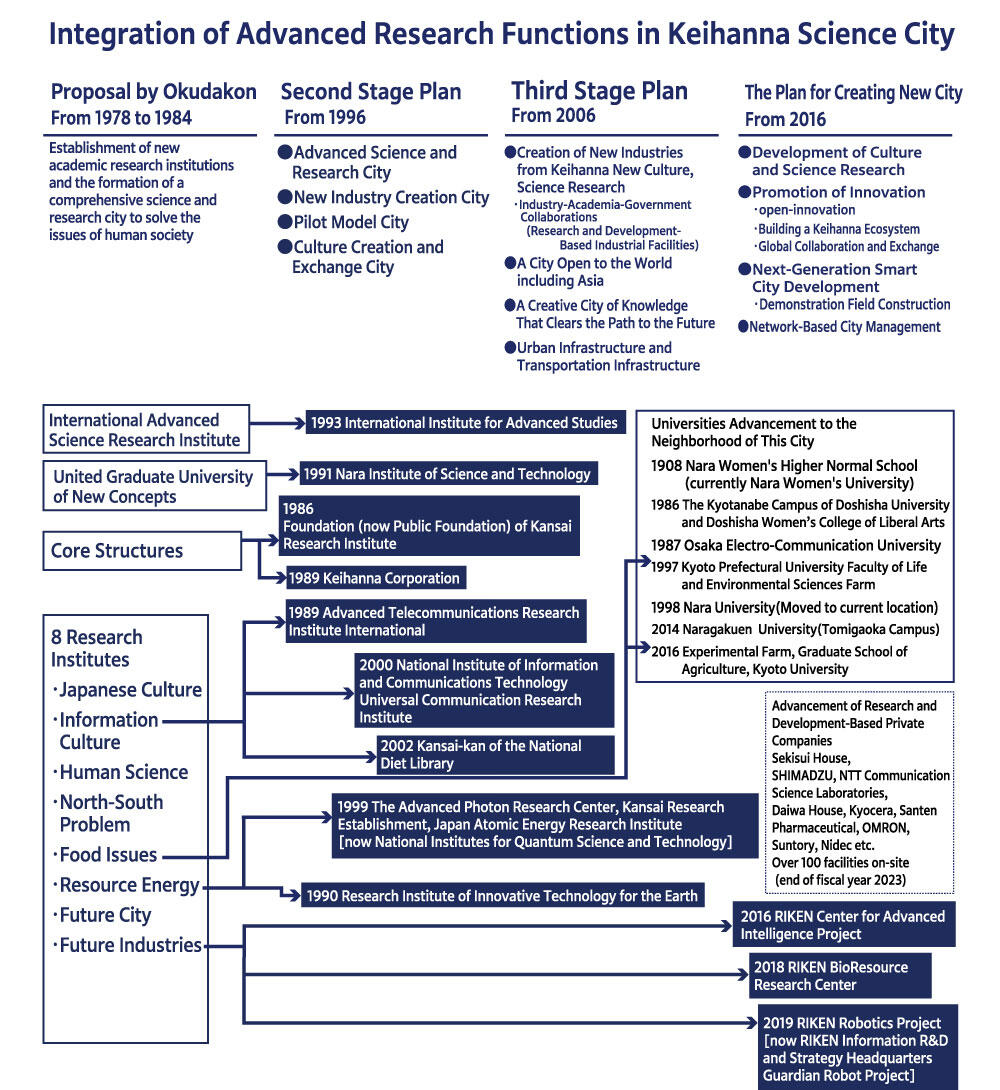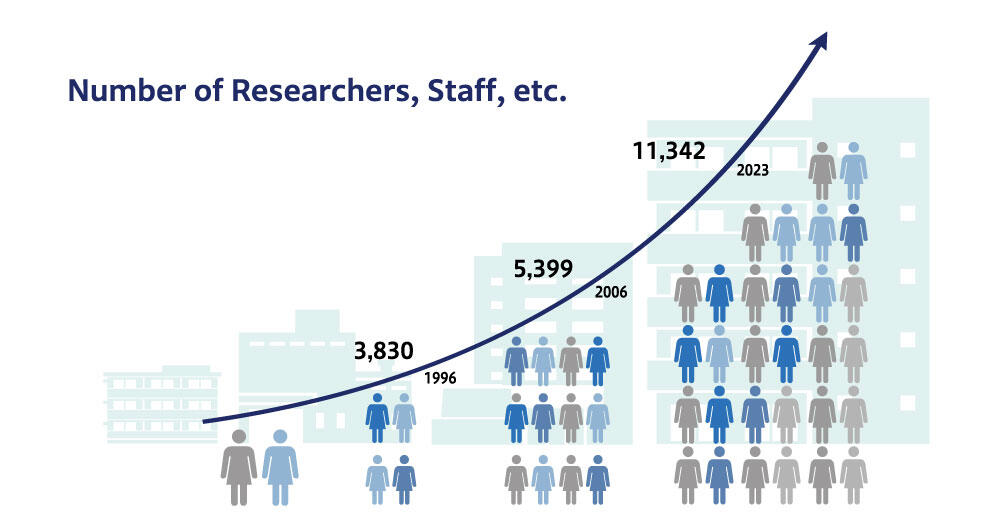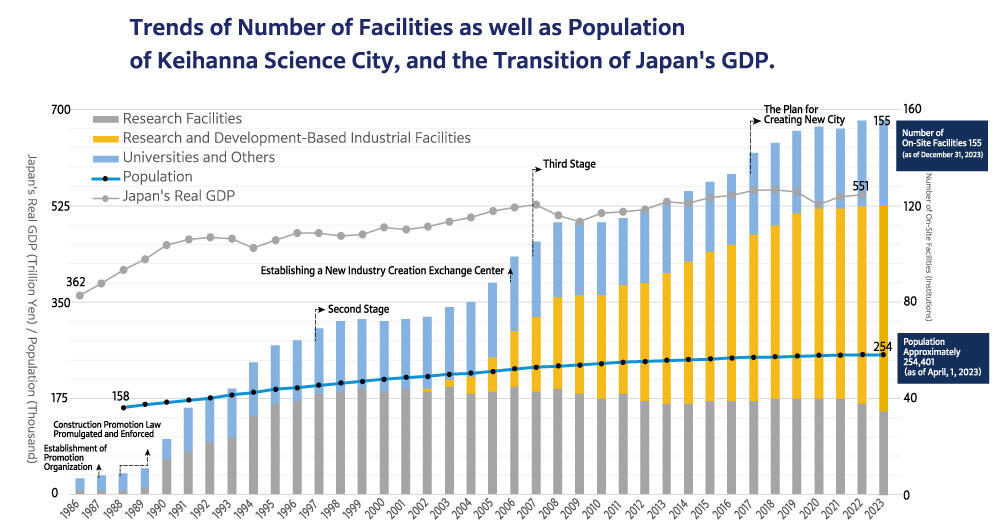In 1978, the "Kansai Science City Research Council (commonly known as Okudakon)" was the starting point for the "proposal and conceptualization phase" of the project, and after its concretization of conception, in 1987, the Kansai Science City Construction Promotion Act was promulgated and enforced. Since then, the city has passed through three stages as a national project: the stage of concept realization, city construction, and advanced city management together with city construction.
Keihanna Science City is now in the latter half of the fourth stage which is the "creation of a new city", and is evolving and developing.

Population Growth and Cluster Development
The population of Keihanna Science City currently exceeds 250,000 and continues to grow. Additionally, in some clusters such as the Kizu district, as a result of a major revision of the original plan in response to changes in society, the six clusters of the Tanabe, Seika and Nishikizu, Heijo and Soraku, Himuro and Tsuda, Kiyotaki and Muroike, and Tawara district have been largely completed, and an excellent urban area has been formed where cultural and science research facilities and residences coexist.


